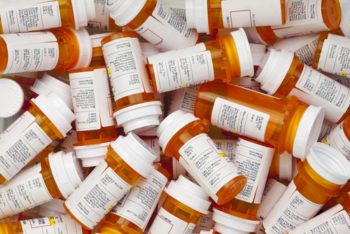 THE HIGH COST OF PRESCRIPTION DRUGS
THE HIGH COST OF PRESCRIPTION DRUGS
Welcome to FACTUAL FRIDAY everyone. As we all know, prescription medications aren’t cheap. The reality, however, is that most of us take some type of medication on a regular basis and the cost can add up quickly – especially when more than one person in the family is dependent on a particular medication to stay healthy.
In fact, nearly seventy-percent of Americans are on at least one prescription drug and more than half take two. And, leading the way as the most commonly prescribed meds in the country we have antibiotics, antidepressants and painkillers.
So, this week we’re exploring the high cost of prescription drugs and offering a little advice on how to save money on your next visit to the pharmacy.
And, while we’re on the subject, it’s important to know that the old-fashioned walk up, brick and mortar pharmacies are the ones that allow you to meet with a pharmacist and discuss your personal needs. These are your best bet for designing a cost-effective plan for lowering the cost of your prescriptions. Also,
1) CHOOSE PHARMACY PICKUP OVER MAIL ORDER
Having prescription drugs delivered to your home can be convenient, but pricey. Typically, when you ask for delivery or sign up for a mail order plan, you’ll pay extra for shipping costs.
Picking up your RX at your local pharmacy may not save you time, but it will save you money. If you have trouble getting out due to a disability, or if you have no transportation, ask your pharmacy if it provides doorstep delivery for free. In the alternative many large retailers such as Walgreens and Walmart, may have free prescription delivery depending upon your insurance plan.
2) USE A DISCOUNT CARD
Now, even if you do not have insurance a discount card can help you get lower prices on many prescription drugs. The large drug companies partner with pharmacies to negotiate better prices through select retail chains. In fact, such programs often offer better deals than do private health insurance plans.
Consider getting a card through SingleCare, Blink Health, WeRx or GoodRx. All are free to join and GoodRx in particular offers lower prices on 40 of the 100 most frequently prescribed medications.
3) ORDER YOUR PILLS IN BULK
We’re talking about medications that you use every day, so buy a bunch at one time. Ask your physician for a 90 or 120-day prescription. This will take you through 3 or 4 months without having to refill your meds. By ordering this way, you can lower your prescription drug costs by 50-percent or more. It also means you’ll be making far fewer trips to the pharmacy.
For example, a 30-day supply of the popular cholesterol medication Lipitor typically costs 30 cents per tablet. When ordering in bulk for a 90-day period, the cost of each tablet drops to 17 cents.
Generic drugs as well cost less when purchased in bulk. The hypertension medication Lisinopril typically runs $4 for a one-month supply. When bought in bulk the price can drop to $10 for a three-month supply.
4) UTILIZE PATIENT ASSISTANCE PROGRAMS
Also known as PAPs, these programs are designed for individuals who cannot afford medications on their own and for those with no health insurance coverage. These programs, which are offered by many prescription drug manufacturers, provide discount vouchers and co-pay coupons that can greatly lower the cost of name-brand drugs.
Some PAPs also offer discount cards for specific medications. So, be sure to check with your physician and explore the options regarding your next prescription before you visit the pharmacy.
5) DON’T FORGET THE NONPROFITS
Many non-profit organizations are funded by the pharmaceutical industry to help those who simply can’t afford the high cost of prescription drugs. One such non-profit is the Partnership for Prescription Assistance, which matches individuals with low-cost clinics as well as local, state and national programs that cover the cost of specific drugs.
The National Council on Aging will help consumers find prescription assistance programs near them through their BenefitsCheckUp program.
And, certain non-profit mail-order pharmacies like Rx Outreach offer flat-rate prices on many commonly prescribed medications.
 Eligibility for this type of non-profit assistance is usually based on the size of your household and your annual income. But if you meet the requirements, you could qualify for an across-the-board reduced rate for prescriptions that could result in substantial savings for you and your family.
Eligibility for this type of non-profit assistance is usually based on the size of your household and your annual income. But if you meet the requirements, you could qualify for an across-the-board reduced rate for prescriptions that could result in substantial savings for you and your family.
Of course, when researching options for reducing your cost of prescription drugs, always begin with your own physician. Initiate a conversation and ask for her or his expertise. Request cheaper generic alternatives. Ask for free samples that may exist. Have your physician recommend the best discount cards and plans for your personal situation.
Choices do exist. You don’t have to spend thousands of dollars to get the medications that you and your loved ones need. Just do your homework, ask for a little help along the way and find a program that works for you!
Thanks again for joining me everyone. Until next time, stay in GOOD HEALTH and . . .
TAKE THE COURSE AND TAKE CHARGE!



Leave a Comment